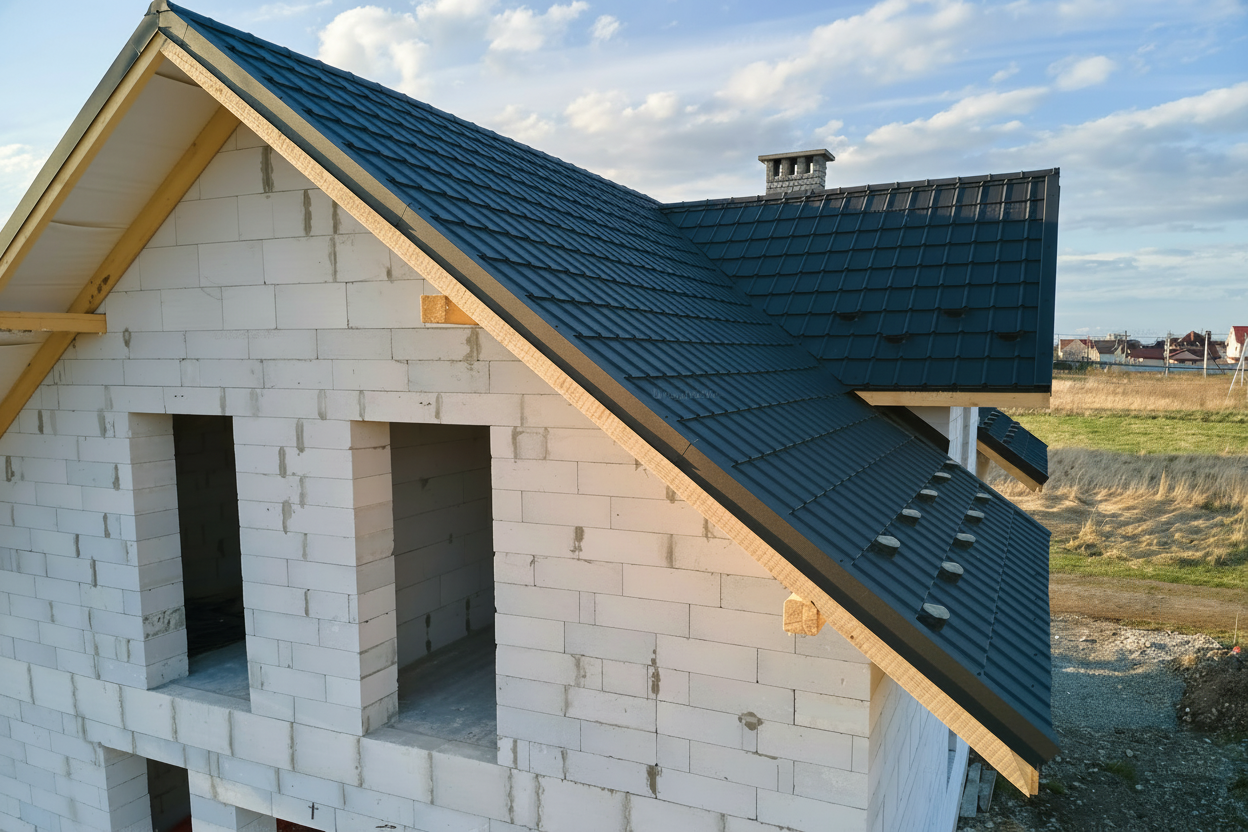
Protect Your Roof Edges From Coastal Wind Damage In 2025
Florida-Specific Roofing & Climate Challenges
October 31,2025
Protect your roof edges from coastal wind damage in 2025

Alt text: Roofing professionals installing reinforced metal edge flashing on a coastal home’s roof perimeter
Coastal homes face unique challenges when storms roll in. Your roof edges take the hardest hit during high winds, and without proper reinforcement, you risk serious structural damage. In Florida’s coastal zones, wind uplift at roof edges causes more failures than almost any other weak point. Salt air, intense storms, and improper installation combine to threaten your home’s protection.
Roof edges experience up to 3 times more wind pressure than center sections during coastal storms.
This guide walks you through practical steps to secure your roof edges before the next storm season. You will learn which materials resist corrosion, how to identify vulnerable spots, and what reinforcements actually work in high wind zones.
Why coastal roof edges fail during storms
Wind does not hit your roof evenly. The edges and corners face the highest uplift pressures, especially on homes with extended overhangs or exposed fascia boards. When contractors skip critical edge details like proper flashing or use substandard fasteners, your roof becomes vulnerable.
Salt spray accelerates metal corrosion along coastal areas. Standard galvanized materials rust quickly, weakening the connections that hold your roof covering in place. Wind uplift dangers increase dramatically when edge components deteriorate.
Florida Building Code requires enhanced edge protection in high wind zones. This includes sealed underlayments, corrosion-resistant fasteners, and properly installed drip edge flashing. Many older homes lack these critical upgrades.
Essential components for wind-resistant roof edges
Securing your roof edges requires attention to multiple interconnected systems. Each component must work together to create a continuous barrier against wind and water intrusion.
Corrosion-resistant flashing and drip edges
Marine-grade metals outlast standard materials in coastal environments. Stainless steel or heavy-duty aluminum flashing resists salt air corrosion for decades. Your drip edge must extend beyond the fascia and secure beneath the underlayment.
Proper installation matters as much as material choice. Fasteners should space 4 to 6 inches apart along the entire edge. Overlapping sections need sealant to prevent water penetration during wind-driven rain.
Metal roof coatings add an extra protection layer, sealing seams and extending the life of edge components.
Reinforced fascia and soffit systems
Your fascia boards anchor the lower edge of your roof system. Weak or rotted fascia cannot hold fasteners under stress. Hurricane-rated fasteners and blocking behind fascia boards distribute loads more effectively.
Soffit vents need secure attachment while still allowing airflow. Pressure differences during storms can rip poorly fastened soffits clean off. Consider how coastal air damages roofs through both direct force and long-term deterioration.
Professional contractors spot subtle signs of edge failure that homeowners often miss until damage spreads.
Structural reinforcement with proper trusses
Your roof’s load path determines how wind forces transfer to the foundation. Engineered trusses with hurricane clips create continuous load paths that prevent uplift. Older homes may need retrofitting to meet current wind load requirements.
The connection between roof and walls matters most. Metal connectors, properly installed, can multiply your roof’s wind resistance. Florida roofing code 2025 specifies these requirements based on your exact location and wind zone.

Alt text: Homeowner consulting with roofing contractor while examining roof edge conditions and reinforcement needs
Best materials and maintenance for coastal protection
Choosing the right roofing materials impacts both immediate wind resistance and long-term durability. Your climate demands materials that handle heat, humidity, salt air, and intense storms.
Comparing roofing materials for wind zones
| Material | Wind Resistance | Corrosion Resistance | Typical Lifespan | Best For |
|---|---|---|---|---|
| Metal roofing | Excellent | Excellent with coating | 40-70 years | High wind zones |
| Concrete tile | Very good | Excellent | 50+ years | Hurricane regions |
| Asphalt shingles | Good with proper fastening | Moderate | 20-30 years | Budget-conscious |
| Clay tile | Very good | Excellent | 50-100 years | Traditional aesthetics |
Metal roofing excels in coastal wind zones when properly fastened. Standing seam systems interlock and allow thermal movement without compromising attachment. Consider top roofing materials for Florida homes based on your specific microclimate.
Tile roofs require reinforced edge details and may need additional mechanical fastening in high wind areas. The weight provides some wind resistance, but individual tiles can still lift if not secured properly.
Year-round edge maintenance checklist
Regular inspection prevents small problems from becoming expensive failures. Schedule professional inspections before and after storm season to catch damage early.
Quarterly inspection tasks:
– Check all flashing for gaps or lifted sections
– Examine fascia and soffit for moisture damage or rot
– Look for missing or loose fasteners along edges
– Clear debris from edge drainage components
– Verify sealant remains intact at all joints
Regular roof inspections in Florida save money by catching issues before they escalate. Small repairs cost far less than emergency storm damage fixes.
Strengthen your roof edges before the next storm
Coastal wind damage prevention starts with understanding your roof’s vulnerabilities. Edge reinforcement protects your entire roofing system and the home beneath it. The investment in proper edge details returns dividends through extended roof life, lower insurance costs, and peace of mind during storm season.
Take action now while weather remains calm. Professional assessment identifies specific improvements your roof needs. Waiting until storm warnings issue leaves you scrambling for emergency repairs at premium prices.
Foxhaven stands ready to evaluate your roof edges and implement solutions that work. Our coastal experience and commitment to quality installation ensure your home weathers whatever storms come. Contact us today to schedule your edge protection assessment.
